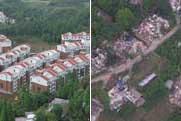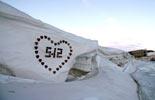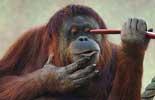China
Skateboards, cars and travel part of modern world of Tibetan monks
MODERNITY, TRADITION AND IDENTITY
For Tibetan monks, private cars and chances to travel are the epitome of modernization.
At Wutunxia Temple, about 10 percent of the monks own cars. While monks don't get a salary, they can earn money individually by selling thangka paintings, which go for 10,000 yuan (about 1,470 U.S. dollars) or more. Thangka paintings feature Buddhist religious themes. One younger monk, Shawu Cering, 36, bought a Hyundai car two years ago with his earnings.
"I always travel since I bought the car. I even made a pilgrimage to Lhasa," said Shawu Cering. "I also made pilgrimages to India and Pakistan, both by plane."
SOME PREFER PILGRIMAGES
Not every monk likes to travel to cosmopolitan cities or scenic spots.
Dawa said many fellow monks had visited Shenzhen in Guangdong Province, one of China's most prosperous cities, but came back saying that they preferred a simple life of meditation.
Dawa actually wants most to go to Lhasa. Pointing at a textbook called "Dialogues in Standard Tibetan," he said that he was studying the dialect spoken in Lhasa. He now speaks Ando, one of three variants of Tibetan, which are mutually unintelligible.
"Learning Mandarin is important, because we need to know at least how to read Chinese signs at bus stops," said Dawa, "but mastering the mother tongue is just as important. After all, I am a Tibetan."
"No matter how life changes, we can never forget Buddhist traditions and culture," Gasang Losae, the abbot said.
To better pass on traditions and culture, he is strict with his disciples. The novice monks, aged from eight to 13, get up at 5 a.m. and recite sutras, sitting on the floor their master's courtyard, until noon.
Then they study thangka painting techniques until 1 p.m. In the afternoon, they listen to their masters' lectures on the sutras. Younger monks have to study up to 12 hours per day.
One of Gasang Losae's rooms retains pure Tibetan household decorations. The room, used for meditation, is filled with ritual objects, ghee lamps and a complete set of the Tripitaka (Buddhist encyclopedia) on wood blocks. Various Thangka hang on the wall.
"Every day I come here to meditate and feel the power of Buddhism," said Gasang Losae. "I always believe that as long as we are Buddhist in our hearts, no matter how our way of life changes, we will not lose our identities or Tibetan Buddhist traditions."
(By Xinhua writers Shi Rong and Wang Yanlin)
Editor:Zhang Ning



